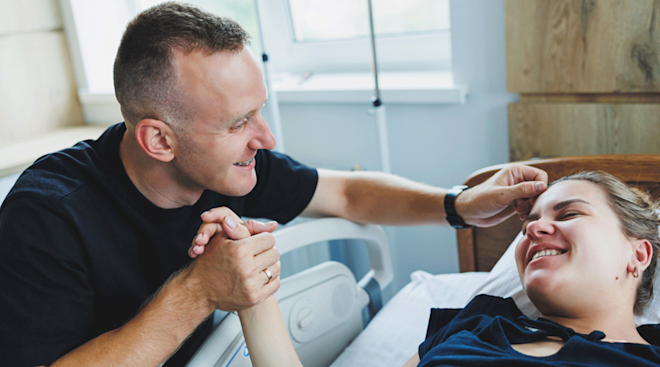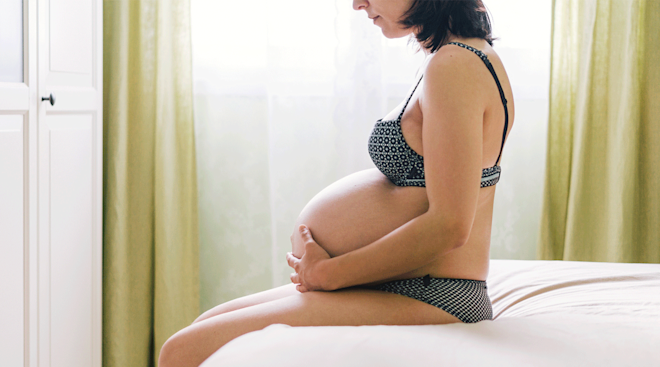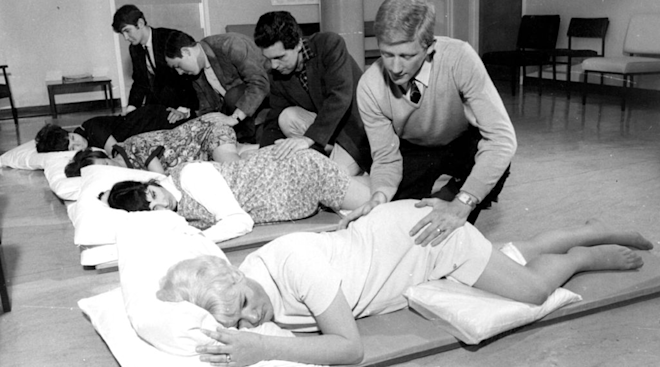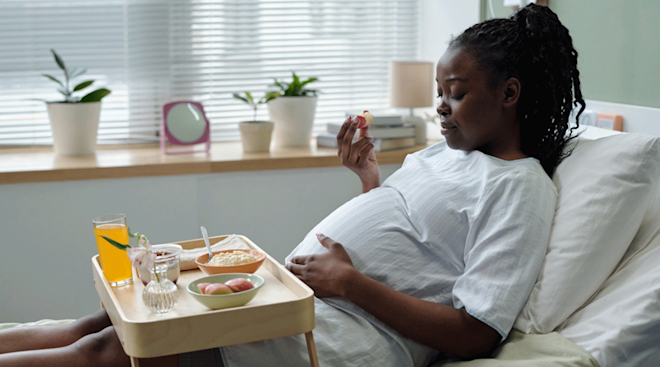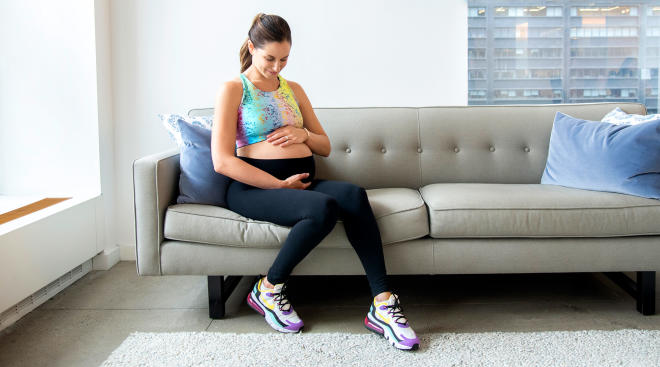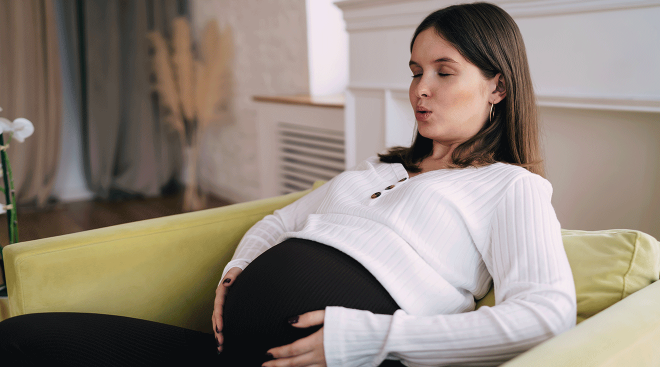Why You Might Get the So-Called Labor Shakes
I expected to feel intense contractions, the gush of my water breaking and even backaches—but shaking during labor? That one was a surprise.
It turns out, though, the labor shakes are a real thing, and they’re pretty common. They can even happen up to 30 minutes after baby is born. So what’s the deal with these labor and postpartum chills? Ahead, experts explain—and I share more of my own experience.
- The labor shakes are a normal phenomenon where you might feel as though you’re shivering or have chills during labor and delivery.
- Hormonal fluctuations are the most common reason for experiencing the labor shakes.
- An epidural or C-section can affect your body’s temperature regulation too, causing you to shake.
- It’s normal to shake for up to about 30 minutes postpartum. If it goes on longer than a couple of hours, let your provider know as this can be a sign of infection.
Labor shakes are involuntary body shivers that can happen during labor and right after birth. “Labor shakes feel very much like shivering when you’re cold, because physically your body’s doing the same thing,” explains Sarah Morrow, CNM, a certified nurse-midwife at Pediatrix Medical Group in Fort Worth, Texas. “It may feel overwhelming because it’s outside of your conscious control.”
When I was in labor with my son four months ago, my entire body shook dramatically and uncontrollably, to the point where my teeth were chattering loudly. But it’s not always this intense. “These symptoms can be mild and barely noticeable or very intense to the point of discomfort,” says Kelli Daugherty, APRN, CNM, a board-certified nurse midwife at OSF HealthCare in Illinois.
If you experience tons of shaking like I did, just know that it’s a completely normal part of the birth process. In fact, one study found that out of 50 women who were in labor, 44 percent shivered during delivery or for up to 30 minutes postpartum.
Labor shakes are primarily caused by rapid hormonal fluctuations, says Daugherty. “The release of oxytocin, adrenaline and cortisol during labor can cause this reaction,” she says. (My labor and delivery nurse told me these are released to prepare you for those final stages of labor!)
Your body’s temperature regulation can come into play too. “Epidural anesthesia or spinal anesthesia can disrupt the temperature regulation of the body and also cause shaking and shivering,” says Daugherty. “Sometimes we’ll see the shaking soon after epidural anesthesia even if the woman isn’t at the transition phase of labor.”
This is also why you might shake during a C-section, adds Daugherty, “as well as the additional adrenaline release, which can be caused by the anxiety or stress of surgery.” Your body can’t tell how hot or cold it is since half of it is numb, explains Morrow. “When your brain suddenly can’t tell what temperature the lower half of your body is, it makes the assumption that you’re cold and starts to shake,” she says.
Labor shakes usually start when you enter the transition phase of labor, which is when you’re about 8 to 10 centimeters dilated, says Morrow. If you’re having an epidural or C-section, you might start shaking soon after you receive anesthesia.
When I started shaking during labor, my contractions were at their peak. According to Stanford Medicine Children’s Health, the transition phase of labor is when contractions are very strong and usually last 60 to 90 seconds, happening every few minutes. Think of this time as your cervix’s last hurrah to open fully—the last phase right before you start pushing.
This probably isn’t the news you want to hear, but labor shakes are really hard—often impossible—to calm. “Sometimes using warm blankets will help put some pressure on the body to calm the jittery muscles. Even though the laboring person may feel cold and shivering from the shakes, we can’t always stop them, even with multiple warm blankets,” Daugherty says.
The good news? In most cases, once you’re in the throes of the labor shakes, baby’s arriving soon. When my shakes and contractions started feeling particularly unmanageable, my nurse reassured me that this feeling meant the whole ordeal was almost over. And she was right—my son was born 30 minutes later.
Morrow says it’s incredibly common to shake after birth, up until about 30 minutes postpartum. Experts believe postpartum shivering, just like the labor shakes, is caused by a major hormonal surge. “There’s a big adrenaline dump after giving birth—the shakes are very normal and will calm down as the hormones regulate,” says Daugherty.
If your shaking continues for longer than a couple of hours, let your provider know. This can be a sign of infection, so your healthcare team will want to check you out ASAP, says Daugherty.
Frequently Asked Questions
Is shaking or chills a sign of labor?
Shaking or chills aren’t a reliable sign of labor. Instead, labor shakes tend to happen toward the end of labor. The American Pregnancy Association (APA) says to look for signs like strong, consistent uterine contractions that get closer and closer together over time.
Why do you shake after giving birth?
Postpartum shaking usually happens due to the sudden drop in estrogen your body just went through while giving birth to baby. “The shakes are very normal and will calm down as the hormones regulate,” says Daugherty.
Do you feel cold during labor and delivery?
It’s definitely normal to feel cold while laboring and giving birth. Daugherty says this usually happens as a result of anxiety, stress and hormonal changes. “Luckily, most labor and delivery units have blankets handy. A heated blanket is a wonderful comfort measure during labor,” she adds. Keep in mind that everyone’s different when it comes to temperature during labor and delivery.
Labor shakes are your body’s way of riding through the hormone fluctuations and changes in temperature regulation that happen when you give birth. While there aren’t any solid tricks to calm these shakes, you’re likely almost to the finish line once you’ve started shaking. Hold tight—these shivers are very normal. “Most importantly, shaking doesn’t affect baby during labor or after birth,” says Morrow.
Please note: The Bump and the materials and information it contains are not intended to, and do not constitute, medical or other health advice or diagnosis and should not be used as such. You should always consult with a qualified physician or health professional about your specific circumstances.
Plus, more from The Bump:
Kelli Daugherty, APRN, CNM, is a board-certified nurse midwife at OSF HealthCare in Illinois. She earned her degree from Frontier Nursing University and specializes in pregnancy and women's healthcare.
Sarah Morrow, CNM, is a certified nurse-midwife at Pediatrix Medical Group in Fort Worth, Texas. She earned her degree from Vanderbilt University School of Medicine.
American Pregnancy Association, Signs of Labor
The Journal of Reproductive Medicine, Observations on the Postpartum Shivering Phenomenon, November 1991
Learn how we ensure the accuracy of our content through our editorial and medical review process.
Navigate forward to interact with the calendar and select a date. Press the question mark key to get the keyboard shortcuts for changing dates.


































